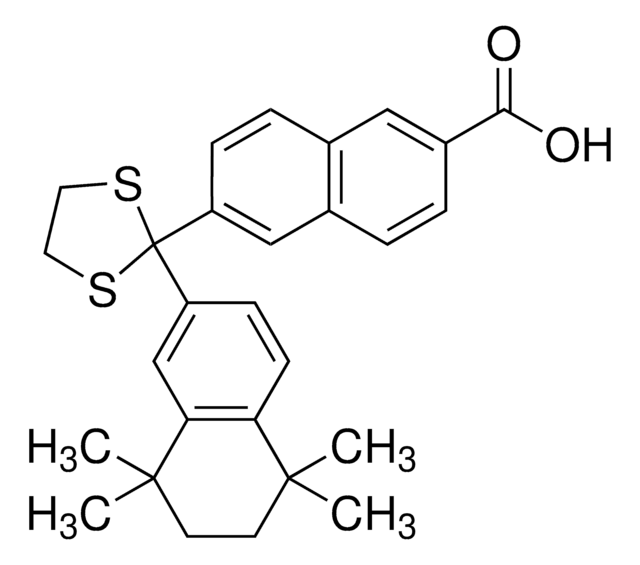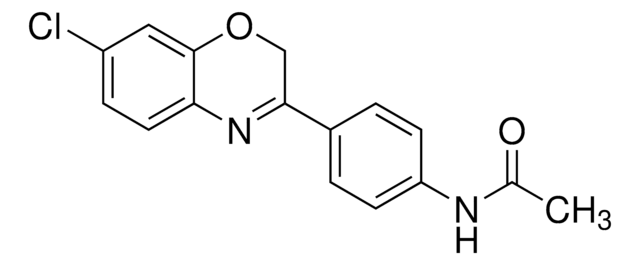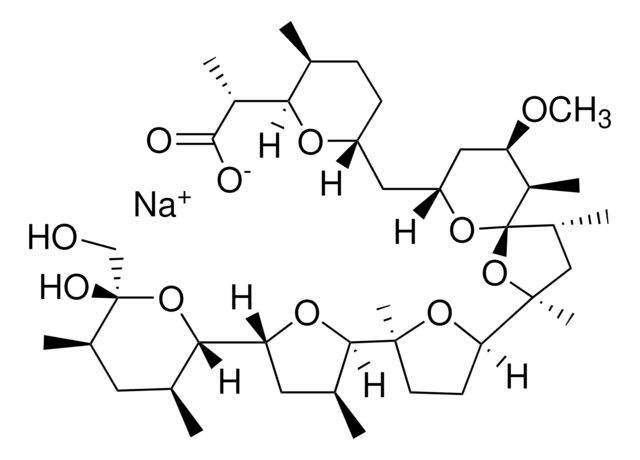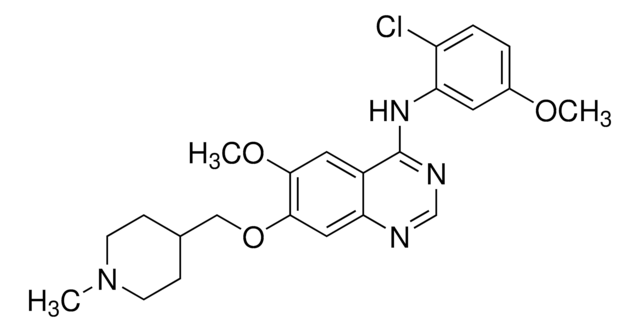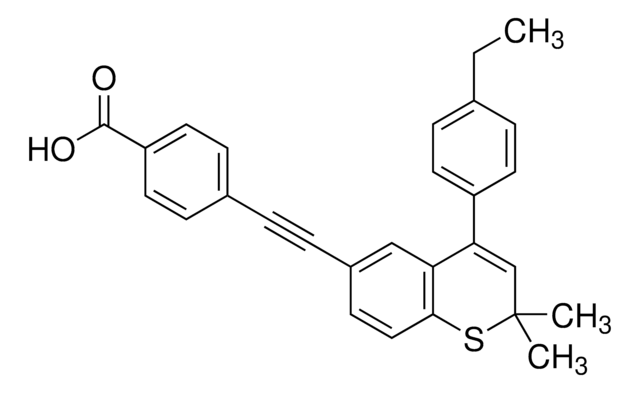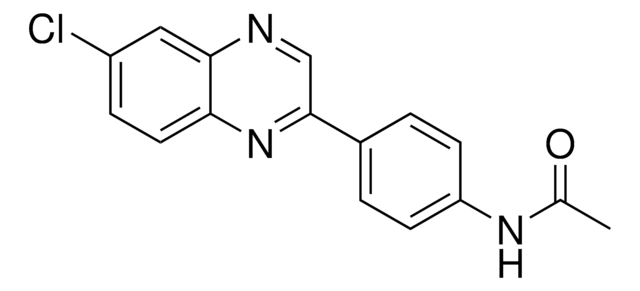추천 제품
Quality Level
분석
≥98% (HPLC)
양식
powder
색상
white to beige
solubility
DMSO: 20 mg/mL, clear
저장 온도
2-8°C
SMILES string
Clc1cc2c(cc1)NC(=CO2)c3ccc(cc3)C
InChI key
PUXHKTZKBDGXBB-UHFFFAOYSA-N
애플리케이션
AR7 has been used:
- as chaperone-mediated autophagy (CMA) activator to study the activity of CMA in rat liver lysosomes
- as a CMA activator to study its effects on expression of DEAD-box helicase 3 X-linked (DDX3X), eukaryotic translation initiation factor 4A1 (EIF4A1), and eukaryotic translation initiation factor 4H (EIF4H) in cancer cells
- to study its effects on synuclein α (SNCA) oligomer levels in mature primary cortical neurons
생화학적/생리학적 작용
AR7 is an atypical retinoic acid receptor α (RARα) antagonist.
AR7 is an atypical retinoic acid receptor α (RARα) antagonist. There is high interest in retinoic acid receptors for cancer and for differentiation studies. Recently, it has been found that signaling through retinoic acid receptor α (RARα) inhibits chaperone-mediated autophagy (CMA). Disruption of RARα signaling has a stimulatory effect on CMA, but can lead to inhibition of macroautophagy. AR7 antagonizes only the CMA inhibitory effect without affecting macroautophagy, allowing the two RARα effects on autophagy to be studied independently.
신호어
Warning
유해 및 위험 성명서
예방조치 성명서
Hazard Classifications
Aquatic Acute 1 - Aquatic Chronic 1
Storage Class Code
11 - Combustible Solids
WGK
WGK 3
Flash Point (°F)
Not applicable
Flash Point (°C)
Not applicable
가장 최신 버전 중 하나를 선택하세요:
Y R Juste et al.
Methods in molecular biology (Clifton, N.J.), 1880, 703-727 (2019-01-06)
Chaperone-mediated autophagy (CMA) is a selective type of autophagy whereby a specific subset of intracellular proteins is targeted to the lysosome for degradation. These proteins are identified by a chaperone that targets them to lysosomes. There, they are translocated into
Yuqing Hao et al.
Autophagy, 15(9), 1558-1571 (2019-03-02)
Chaperone-mediated autophagy (CMA) is a lysosomal degradation pathway of select soluble proteins. Nearly one-third of the soluble proteins are predicted to be recognized by this pathway, yet only a minor fraction of this proteome has been identified as CMA substrates
Panagiota Mavroeidi et al.
Autophagy, 18(9), 2104-2133 (2022-01-11)
Accumulation of the neuronal protein SNCA/alpha-synuclein and of the oligodendroglial phosphoprotein TPPP/p25A within the glial cytoplasmic inclusions (GCIs) represents the key histophathological hallmark of multiple system atrophy (MSA). Even though the levels/distribution of both oligodendroglial SNCA and TPPP/p25A proteins are
Alba Navarro-Romero et al.
NPJ Parkinson's disease, 8(1), 126-126 (2022-10-07)
Mutations in the GBA gene that encodes the lysosomal enzyme β-glucocerebrosidase (GCase) are a major genetic risk factor for Parkinson's disease (PD). In this study, we generated a set of differentiated and stable human dopaminergic cell lines that express the
Philip Wing-Lok Ho et al.
Autophagy, 16(2), 347-370 (2019-04-16)
Parkinson disease (PD) is an age-related neurodegenerative disorder associated with misfolded SNCA/α-synuclein accumulation in brain. Impaired catabolism of SNCA potentiates formation of its toxic oligomers. LRRK2 (leucine-rich repeat kinase-2) mutations predispose to familial and sporadic PD. Mutant LRRK2 perturbs chaperone-mediated-autophagy
자사의 과학자팀은 생명 과학, 재료 과학, 화학 합성, 크로마토그래피, 분석 및 기타 많은 영역을 포함한 모든 과학 분야에 경험이 있습니다..
고객지원팀으로 연락바랍니다.